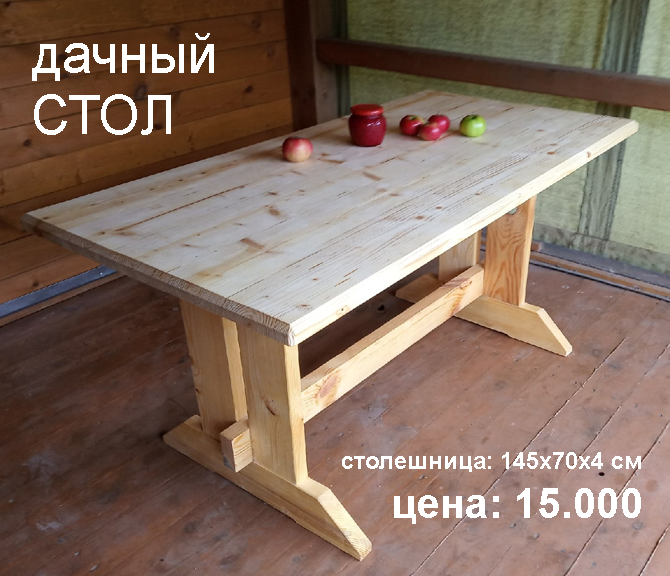
Charles Lloyd
- Подробности
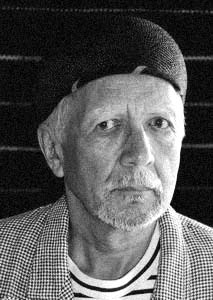 Charles Lloyd is an international treasure
Charles Lloyd is an international treasure
Carlos Santana,
I’ve known Charles for 40 years, at least – and for me, he has contributed as much as any other person living in the world to the development of the art form of the saxophone – and Charles plays the saxophone, like, nobody else can even come close. So, I admire and respect him, a great artist.
Elvin Jones, San Sebastian, Spain, 2002
Each time we hear him (in Montreux), the mystical Charles Lloyd surprises us with what he continues to give us - simplicity linked with virtuosityand full of deep emotions..
24 Heures
There has not been a saxist whose work is this spiritual since John Coltrane and Albert Ayler.
The Boston Globe
Lloyd’s work on tenor saxophone and flute is extraordinary. A true original.
Los Angeles Times
Lloyd, a master of the tenor saxophone and flute.
The Washington Post
The saxophonist, Charles Lloyd, like the phoenix, comes out of the ashes renewed. His music is a subtle and fragile balance between tradition and creation, between air and fire, between the caress of breath and a continuing cry. He has decanted his art to keep only the quintessence. (Colmar Festival)
DNA, September 10, 2004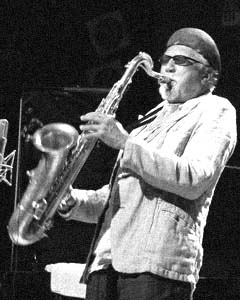
Charles Lloyd is leaner, cleaner, more aesthetically focused and creatively attuned than ever his music manages the rare trick of being adventurous and accessible, joyful and still, spiritual and deeply human at the same time.
Montreal Gazette
Charles Lloyd invents pearls in the night. In a concert of 2 1/2 hours, it was a rare moment that joins the list of unforgettable concerts in the anthology of the Marciac Festival equal to the concerts of Stan Getz and Sonny Rollins.
Le Monde
He’s the Master, we want him back soon.
TimeOut / London,
At 67 when most individuals are thinking of ways to slow down and kick back, Charles Lloyd has shifted to a higher gear. His concerts and recordings are events of pristine beauty and elegance, full of intensely felt emotion and passion that touches deep inside the heart. This not entertainment, but the powerful uncorrupted expression of beauty through music. When music vibrates, the soul vibrates and touches the spirit within. Credited by many musicians with anticipating the World Music movement by incorporating cadences of many cultures in his compositions as early as the late1950s, Charles Lloyd describes his music as having always "danced on many shores." As Peter Watrous wrote in The New York Times,
"Mr. Lloyd has come up with a strange and beautiful distillation of the American experience, part abandoned and wild, part immensely controlled and sophisticated." From the moment he first came to prominence as the young music director of the Chico Hamilton Quintet in 1960, Lloyd began to take audiences on journeys that traversed enormous distances. Over nearly four decades, his compositions have punctuated the post-bop period, embraced the traditional music of a host of world cultures and ciphered the psychedelic 1960s with avant-garde improvisation. Lloyd was one of the first jazz artists to sell a million copies of a recording ( ‘Forest Flower’) and then he surprised us by walking away from performing just at the point that he was dubbed a jazz superstar. Actually he was just following a trajectory that was taking him closer to the essence of the music he was hearing.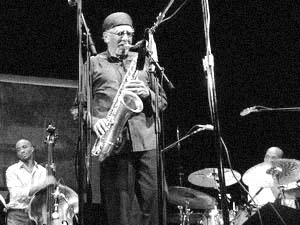
Charles Lloyd was born in Memphis, Tennessee, on March 15, 1938. Like New Orleans, 400 miles to the south on the Mississippi, Memphis has a rich river culture and musical heritage saturated in blues, gospel and jazz. Lloyd's ancestry of African, Cherokee, Mongolian, and Irish reflects a similar rich culture. He was given his first saxophone at the age of 9, riveted to 1940's radio broadcasts by Charlie Parker, Coleman Hawkins, Lester Young, Billie Holiday and Duke Ellington, he was transported by jazz. Lloyd's early teachers included pianist Phineas Newborn and saxophonist Irvin Reason. His closest childhood friend was the great trumpeter Booker Little. As a teenager Lloyd played jazz with saxophonist George Coleman and was a sideman for blues greats Johnny Ace, Bobby Blue Bland, Howlin' Wolf and B.B. King.
Classical music also exerted a strong pull on the young Lloyd, and in 1956 he left Memphis for Los Angeles to earn his Master's in music at USC where he studied with Halsey Stevens, a foremost Bartok authority. While his days were spent in academia, Lloyd spent nights getting educated on the job in L.A.'s jazz clubs, playing with Ornette Coleman, Billy Higgins, Scott La Faro, Don Cherry, Charlie Haden, Eric Dolphy, Bobby Hutcherson and other leading west coast jazz artists.
He also was a member of the Gerald Wilson big band.
In 1960 Lloyd was invited to become music director of Chico Hamilton's group when Dolphy left to join Charles Mingus's band. The Hungarian guitarist Gabor Szabo and bassist Albert "Sparky" Stinson soon joined Lloyd in the band.
Hamilton's most memorable albums for Impulse Records, ‘Passin' Through’, ‘Man from Two Worlds,’ featured music arranged and written almost entirely by Lloyd, and during this period of prolific composing he was also finding his unique voice as a saxophonist.
Lloyd jumped into the New York club scene of the early 1960s, playing at the Five Spot, Birdland, Half Note, Jazz Gallery, Slugs and Village Vanguard and soon befriended many of the jazz masters he so admired Coltrane, Monk, Mingus, Coleman Hawkins and Miles Davis, among others. A memorable collaboration took place between Lloyd and the Nigerian master drummer Babatunde Olatunji, with whom the saxophonist played when he wasn't on the road with Hamilton.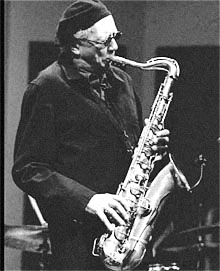
In 1964, Lloyd joined the Cannonball Adderley Sextet, and performed alongside Nat Adderley, Joe Zawinul, Sam Jones and Louis Hayes. That year he also signed with CBS Records and began to record as a leader. Lloyd's Columbia recordings, ‘Discovery,’ (1964) and ‘Of Course, Of Course,’ (1965) featured sidemen including Roy Haynes and Tony Williams on drums, Richard Davis and Ron Carter on bass, Gabor Szabo on guitar and Don Friedman on piano and led to his being voted Downbeat Magazine's "New Star."
Lloyd left Cannonball Adderley in 1965 to form his own quartet © a brilliant ensemble that introduced the jazz world to the talents of pianist Keith Jarrett, drummer Jack DeJohnette and bassist Cecil McBee. Their first release together was a studio recording, ‘Dream Weaver.’ followed by ‘Forest Flower: Live at Monterey,’ (1966). ‘Forest Flower’ made history as one of the first jazz recordings to sell a million copies and the album's firsts continued as it became a stunning crossover success that appealed to a popular mass market and gained heavy airplay on FM radio. The Quartet was the first jazz group to appear at the famed Fillmore Auditorium in San Francisco and other rock palaces and shared billing with Jimi Hendrix, Janis Joplin, Cream, the Grateful Dead and Jefferson Airplane.
In 1967 Charles Lloyd was voted "Jazz Artist of the Year" by Down Beat and the Quartet was invited to tour the world. The Lloyd quartet found a warm reception in Europe at the new jazz festivals in Montreux, Antibes, Molde. Its performances in the Far East, the Soviet Union and the Eastern Bloc nations of Europe often marked the first time these audiences had heard an American jazz group live. At the peak of the Cold War in 1967, Lloyd made headlines when his Quartet became the first jazz group from the U.S. to play in the USSR by invitation of the Soviet people rather than through government sponsorship. Its first stop was Tallinn and subsequent concerts took place in Leningrad and Moscow.
The acoustic group fused virtuoso improvising with a constantly changing combination of musical tropes, incorporating the challenge of avant-garde or “free jazz” with elements of non-Western music, impressionistic harmonies and occasional rock rhythms in open-ended musical flights that echoed the free spirit of the psychedelic 1960s. Electric jazz/rock germinated in a series of original performances that, ironically, were acoustic. Miles Davis and other jazz figures were highly influenced by Lloyd's explorations and soon plugged in to play to the young fans that Lloyd had reached through his acoustic explorations.
And then, at the height of his career, Lloyd disbanded the quartet and dropped from sight in the early 1970s, withdrawing to pursue an inner journey in Big Sur, the wild haven that had previously attracted other artists and seekers including Robinson Jeffers, Langston Hughes, Henry Miller, Lawrence Ferlinghetti, Jack Kerouac, Jean Varda and Jamie DeAngulo.
It wasn't until 1981 that Lloyd moved to break a decade of silence when a remarkable 18 year old pianist from France, Michel Petrucciani, arrived in Big Sur and Lloyd was compelled to help introduce this gifted artist to the world. This led to U.S., European and Japanese tours in 1982 and 1983 with Petrucciani on piano, Palle Danielsson on bass and drummer Son Ship Theus. British jazz critic Brian Case called Lloyd's return "one of the events of the 1980s." The group produced a special edition cassette ‘Night Blooming Jasmine,’ and two live records, ‘Montreux '82,’ and ‘A Night in Copenhagen,’ which also features Bobby McFerrin (recently was reissued by Blue Note Records.) Satisfied that Petrucciani was beginning to receive the recognition he deserved, Lloyd again retreated to Big Sur.
In 1986, after being hospitalized with a nearly fatal medical condition, Lloyd rededicated himself to music. When he regained his strength he started composing again. In 1988 he formed a new quartet with the renowned Swedish pianist Bobo Stenson. When Lloyd returned to the Montreux Festival in 1988, Swiss critic Yvan Ischer wrote: "To see and hear Charles Lloyd in concert is always an event, not only because this saxophonist has been at quite a few crossroads, but also because he seems to hold an impalpable truth which makes him a thoroughly original musician...This is what we call grace."
In 1989, seven years after he had made his last album, Lloyd returned to the studio to record ‘Fish Out of Water,’ (1990) for ECM Records. The project marked the beginning of a new wave of Lloyd compositions and recordings and ECM's producer, Manfred Eicher, compared the recording to a Giacometti painting, saying "I really believe this is the refined essence of what music should be. All the meat is gone, only the bones remain."
Lloyd continued with ‘Notes From Big Sur,’ (1992), ‘The Call,’ (1994), ‘All My Relations,’ (1995), ‘Canto,’ (1997), ‘Voice in the Night,’ (1999), ‘The Water is Wide,’(2000) ‘Hyperion With Higgins,’(2001) and ‘ Lift Every Voice’ ( 2002 ), “ Which Way Is East” (2004) and ‘Jumping the Creek’ (2005). His association with Manfred Eicher and ECM Records has been a very fertile period.
In April of 1997, he returned to Tallinn to commemorate the 30th year anniversary of his performance there in 1967. People came from hundreds of miles to join in celebrating his return to Estonia and give him the keys to the city of Tallinn. The concert with his quartet was once again a triumph and in his rave review in Down Beat, Tom Conrad wrote: "When they got to Forest Flower, the ascent and affirmation in the final notes brought the crowd to its feet as if they had been lifted on an updraft of air."
When Lloyd dedicated his recording ‘Canto’ to his friend Billy Higgins, Manfred Eicher suggested that Lloyd bring Higgins in on the next project. For ‘Voice in the Night’, released in 1999, Lloyd brought in Higgins, guitarist John Abercrombie, and bass great Dave Holland. Entertainment Weekly hailed the recording "a triumph.”
Higgins and Abercombie stayed on board for the next Lloyd recording, ‘The Water is Wide,’ released in the Fall of 2000. Two young lions were also added to the mix; Brad Mehldau and Larry Grenadier. ‘The Water Is Wide’ received awards and high praise around the world. Aside from the many ‘best of’ lists in the US, it won Jazz Record of the Year 2000 in Japan and Czecklaslovakia, several awards in Germany and Disc de l’Annee from Jazzman in France.
Billy Higgins death in May 2001 was a tragedy for Lloyd. They had met as teenagers when Lloyd was studying at USC in 1956 – as a friend and collaborator, Higgins is irreplaceable. ‘Hyperion With Higgins, ‘was released later in the Fall of 2001. The recording, which was produced during the same sessions as ‘The Water is Wide.’
2001 ended on a high note for Lloyd with his November duo performance with Zakir Hussain at Grace Cathedral in San Francisco. Together they found a way to lift the spirits of the community through the music. This concert which was part of the San Francisco Jazz Festival was the first concert of the festival to sell out and it is the first time in the festival history that the cathedral series sold out.
Lloyd’s ninth project for ECM is a double disc titled ‘Lift Every Voice’, released in October, 2002. Jazzwise in the UK called it “one hell of a recording..” In March 2004, ECM released the last recording that Lloyd and Higgins made together, ‘Which Way Is East’, it is a unique and extraordinary document of the wide ranging flow of their musical creativity – but as well it documents a deep and lasting friendship. The recording of ‘Which Way Is East,’ was also documented on video and in a documentary called ‘Home.’
Charles Lloyd maintains an active touring schedule with performances at festivals and concert halls. He continues to work with both Geri Allen and John Abercrombie, and at times presents a quintet with both of them included. Lloyd also continues to do special projects with Zakir Hussain.
Charles Lloyd ECM Discography
Fish Out of Water ( 1990)
Charles Lloyd: tenor saxophone, flute
Bobo Stenson: piano
Palle Danielsson: double-bass
Jon Christensen: drums
Notes From Big Sur (1992)
Charles Lloyd: tenor saxophone
Bobo Stenson: piano
Anders Jormin: double-bass
Ralph Peterson: drums
The Call ( 1994)
Charles Lloyd: tenor saxophone
Bobo Stenson: piano
Anders Jormin: double-bass?
Billy Hart: drums
All My Relations (1996)
Charles Lloyd: tenor saxophone, flute, Chinese oboe
Bobo Stenson: piano
Anders Jormin: double-bass
Billy Hart: drums
Canto (1997)
Charles Lloyd: tenor saxophone, Tibetan oboe
Bobo Stenson: piano?
Anders Jormin: double-bass
Billy Hart: drums
Voice in the Night (1999)
Charles Lloyd: tenor saxophone
John Abercrombie: guitar
Dave Holland: double-bass
Billy Higgins: drums, percussion
The Water is Wide (2000)
Charles Lloyd: tenor saxophone
John Abercrombie: guitar
Brad Mehldau: piano
Larry Grenadier : double-bass
Billy Higgins: drums
Hyperion With Higgins (2001)
Charles Lloyd: tenor saxophone taragato
John Abercrombie: guitar
Brad Mehldau: piano
Larry Grenadier: double-bass
Billy Higgins: drums
Lift Every Voice ( 2002)
Charles Lloyd: tenor saxophone, alto flute, taragato
Geri Allen: piano
John Abercrombie: guitar
Marc Johnson: double bass
Larry Grenadier: double bass
Billy Hart: drums
Which Way Is East ( 2004)
Charles Lloyd: tenor and alto saxophones, C and alto flutes, taragato, Tibetan oboe, maracas, voice
Billy Higgins: drums, guimbri, Guinean and Senegalese hand drums, guitar, voice
Jumping the Creek (2005)
Charles Lloyd: tenor and alto saxophone, taragato
Geri Allen: piano
Robert Hurst: double bass
Eric Harland: drums
Main menu
Anthology
Sheet Music Archive
 lesson 1lesson 2lesson 3
lesson 1lesson 2lesson 3
